|
 |
 Автор: Williams Автор: Williams
 Дата: 22 октября 2020 Дата: 22 октября 2020
 Просмотров: 2 258 Просмотров: 2 258 |
| |
Michael Law, Amy Collins - Getting to Know ArcGIS Pro v2.6
Esri Press, 2020
pdf, 236 pages, english
eISBN: 9781589486362
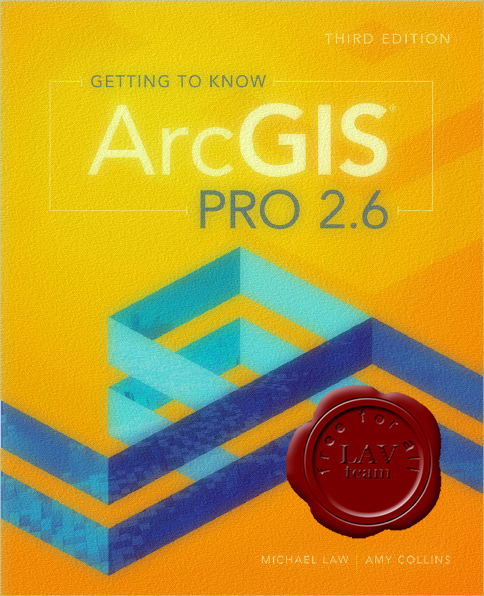
Continuing the tradition of the best-selling Getting to Know series, Getting to Know ArcGIS Pro 2.6 teaches new and existing GIS users how to get started solving problems using ArcGIS Pro. Using ArcGIS Pro for these tasks allows you to understand complex data with the leading GIS software that many businesses and organizations use every day.
Getting to Know ArcGIS Pro 2.6 introduces the basic tools and capabilities of ArcGIS Pro through practical project workflows that demonstrate best practices for productivity. Explore spatial relationships, building a geodatabase, 3D GIS, project presentation, and more. Learn how to navigate ArcGIS Pro and ArcGIS Online by visualizing, querying, creating, editing, analyzing, and presenting geospatial data in both 2D and 3D environments. Using figures to show each step, Getting to Know ArcGIS Pro 2.6 demystifies complicated process like developing a geoprocessing model, using Python to write a script tool, and the creation of space-time cubes. Cartographic techniques for both web and physical maps are included.
Each chapter begins with a prompt using a real-world scenario in a different industry to help you explore how ArcGIS Pro can be applied for operational efficiency, analysis, and problem solving. A summary and glossary terms at the end of every chapter help reinforce the lessons and skills learned.
Ideal for students, self-learners, and seasoned professionals looking to learn a new GIS product, Getting to Know ArcGIS Pro 2.6 is a broad textbook and desk reference designed to leave users feeling confident in using ArcGIS Pro on their own. |
| |
 Читать статью дальше (комментариев - 12)
Читать статью дальше (комментариев - 12)
| |
|
 |
 Автор: Williams Автор: Williams
 Дата: 20 октября 2020 Дата: 20 октября 2020
 Просмотров: 1 402 Просмотров: 1 402 |
| |
Ivan Vanicek, Daniel Jirasko, Martin Vanicek - Modern Earth Structures for Transport Engineering
Engineering and Sustainability Aspects
CRC, 2020
pdf, 185 pages, english
ISBN: 978-0-429-26366-8
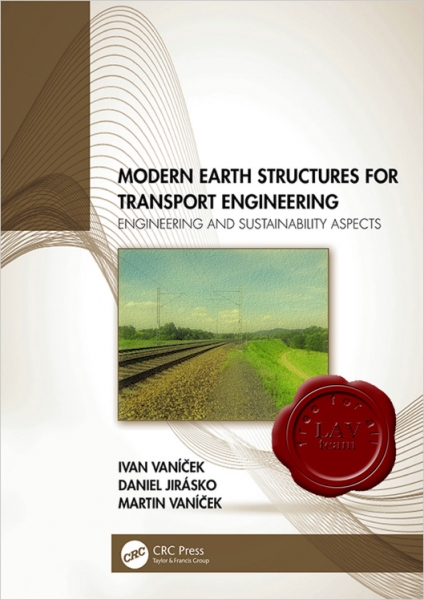
Earth structures together with foundation structures and underground structures fall under the more general subject matter of geotechnical structures. Under the term geotechnical structures earth structures are the oldest matter of concern, but rather paradoxically in comparison to foundation structures (foundation engineering) and to underground structures (tunnelling), the first monograph covering all aspects of earth structures was written only one decade ago (Vaníček and Vaníček, 2008). Briefly stated, we can use the following categorical explication for the division of geotechnical structures:
- Construction with ground for earth structures, where ground (soil) is the natural and most used construction material;
- Construction on the ground for foundation structures;
- Construction in the ground for underground structures.
This book will deal only with earth structures for transport engineering, although it is recognized that earth structures for water or environmental engineering also generate other interesting concerns. Embankments and cuts of motorways and railways comprise the main subject of the presented material. However, the main recommendations are valid also for airfields and parking areas.
Development in each profession is progressing in the form of individual steps, wherein a hierarchical part relates to new knowledge or to pressure from society to improve something, and a lateral part is more connected with the implementation of this knowledge into general practice. For earth structures, development was very slow up to the beginning of the 20th century, when design was mostly based on previous experience. The first significant advance is usually connected with the principle of effective stresses and the theory of consolidation (Terzaghi, 1925, 1943). Other advances were made in the 1950s to 1970s with new testing devices Bishop and Henkel (1957, 1962), the principle of stress path (Lambe and Whitman, 1969), and the implementation of numerical methods for the design of structures (Zienkiewicz, 1967).
Present-day demands on earth structures in transport engineering are strongly influenced by two aspects.
The technical engineering aspect involves structure safety, along with optimal design and implementation. From this perspective, all new knowledge should be applied. Nevertheless, the basic approach to safety and optimal design is strongly affected by geotechnical risk, to which this design and structure implementation is connected. However, to guarantee a certain level of safety for a certain structure, some standards should be accepted. For example, in Europe these standards are included in Eurocode 7 (EC 7) Geotechnical Design (EN 1997).
The second aspect is strongly connected with acceptance of the principle of sustainable development, which was specified at the highest level during the international "Environmental Summit” in Rio de Janeiro in 1992. Gro Harlem Brundtland, the Norwegian prime minister, used for example the following definition of sustainable development: "Development which responds to the needs of the present without compromising the capacity of future generations to respond to their needs.” However, the sustainability approach strongly relates to two other principles, which are nowadays specified for earth structures in transport engineering – the principles of availability and affordability.
Both aspects form the essence of this book, and therefore the term "modern” can be used for this stage of development. The authors recognize with great appreciation support from the Czech Technical University in Prague where the research project CESTI (the Centre for Effective and Sustainable Transport Infrastructure) is being carried out. |
| |
 Читать статью дальше (комментариев - 7)
Читать статью дальше (комментариев - 7)
| |
|
 |
 Автор: Williams Автор: Williams
 Дата: 17 октября 2020 Дата: 17 октября 2020
 Просмотров: 1 402 Просмотров: 1 402 |
| |
R. Winston Revie - Oil and Gas Pipelines: Integrity and Safety Handbook
Wiley, 2015
pdf, 855 pages, english
ISBN: 978-1-118-21671-2

It's a comprehensive and detailed reference guide on the integrity and safety of oil and gas pipelines, both onshore and offshore.
- Covers a wide variety of topics, including design, pipe manufacture, pipeline welding, human factors, residual stresses, mechanical damage, fracture and corrosion, protection, inspection and monitoring, pipeline cleaning, direct assessment, repair, risk management, and abandonment.
- Links modern and vintage practices to help integrity engineers better understand their system and apply up-to-date technology to older infrastructure.
- Includes case histories with examples of solutions to complex problems related to pipeline integrity.
- Includes chapters on stress-based and strain-based design, the latter being a novel type of design that has only recently been investigated by designer firms and regulators.
- Provides information to help those who are responsible to establish procedures for ensuring pipeline integrity and safety.
|
| |
 Читать статью дальше (комментариев - 7)
Читать статью дальше (комментариев - 7)
| |
|
 |
 Автор: Williams Автор: Williams
 Дата: 8 октября 2020 Дата: 8 октября 2020
 Просмотров: 979 Просмотров: 979 |
| |
Shuyu Sun, Tao Zhang - Reservoir Simulations: Machine Learning and Modeling
Elsevier, 2020
pdf, 341 pages, english
ISBN: 978-0-12-820957-8
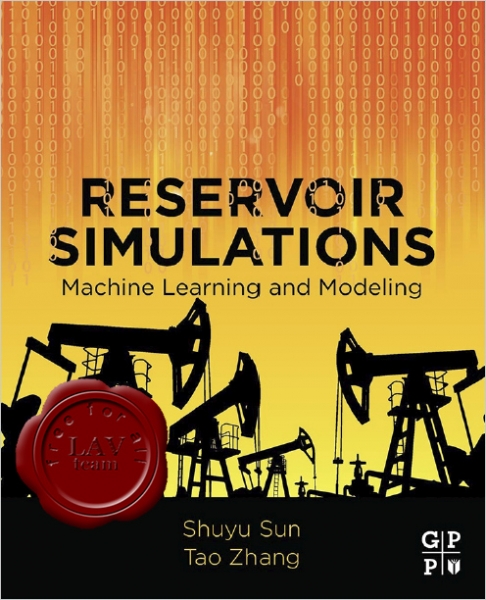
Reservoir Simulation: Machine Learning and Modeling helps the engineer step into the current and most popular advances in reservoir simulation, learning from current experiments and speeding up potential collaboration opportunities in research and technology. This reference explains common terminology, concepts, and equations through multiple figures and rigorous derivations, better preparing the engineer for the next step forward in a modeling project and avoid repeating existing progress. Well-designed exercises, case studies and numerical examples give the engineer a faster start on advancing their own cases. Both computational methods and engineering cases are explained, bridging the opportunities between computational science and petroleum engineering. This book delivers a critical reference for today’s petroleum and reservoir engineer to optimize more complex developments. |
| |
 Читать статью дальше (комментариев - 1)
Читать статью дальше (комментариев - 1)
| |
|
 |
 Автор: Williams Автор: Williams
 Дата: 2 октября 2020 Дата: 2 октября 2020
 Просмотров: 3 310 Просмотров: 3 310 |
| |
Munir Hamad - AutoCAD 2021 Beginning and Intermediate
Mercury Learning and Information, 2020
pdf, 767 pages, english
ISBN: 978-1-683925-224
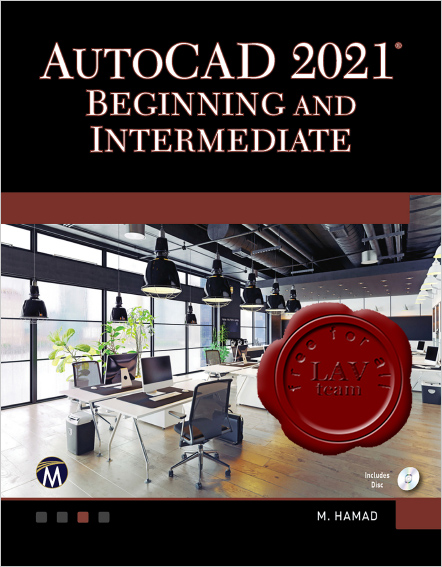
This book is the most comprehensive book you will find on AutoCAD 2021 – 2D Drafting. Covering all of the 2D concepts, it uses both metric and imperial units to illustrate the myriad drawing and editing tools for this popular application. Use the companion files to set up drawing exercises and projects and to see all of the book’s figures in color (Files also available for downloading with Amazon order number by writing to the publisher at info@merclearning.com). AutoCAD 2021 Beginning and Intermediate includes over 100 "mini-workshops” that complete small projects from concept through actual plotting. Solving all of these workshops will simulate the creation of three projects (architectural and mechanical) from beginning to end, without overlooking any of the basic commands and functions in AutoCAD 2021.
Features
- Designed for novice users of AutoCAD 2021. Most useful for "teach yourself” or instructor-led AutoCAD training in Level 1 or 2.
- New chapter on the "Drawing Compare” function.
- Companion files featuring drawings, practice and finished plots, 4-color figures, etc.
- Includes over 100 "mini-workshops” and hundreds of figures that complete small projects.
- Uses both English and metric units in examples, exercises, projects, and descriptions.
- Covers three full projects (metric and imperial) for architectural and mechanical designs.
- Helps you to prepare for the AutoCAD Certified Professional exam.
- Exercises and instructor’s resources available for use as a textbook.
|
| |
 Читать статью дальше (комментариев - 11)
Читать статью дальше (комментариев - 11)
| |
|
 |
 Автор: Williams Автор: Williams
 Дата: 28 сентября 2020 Дата: 28 сентября 2020
 Просмотров: 1 428 Просмотров: 1 428 |
| |
Donald Newnan, Ted Eschenbach, Jerome Lavelle, Neal Lewis - Engineering Economic Analysis, 14th Edition
Oxford University Press, 2020
pdf, 1350 pages, english
ISBN: 978-0-19-093191-9
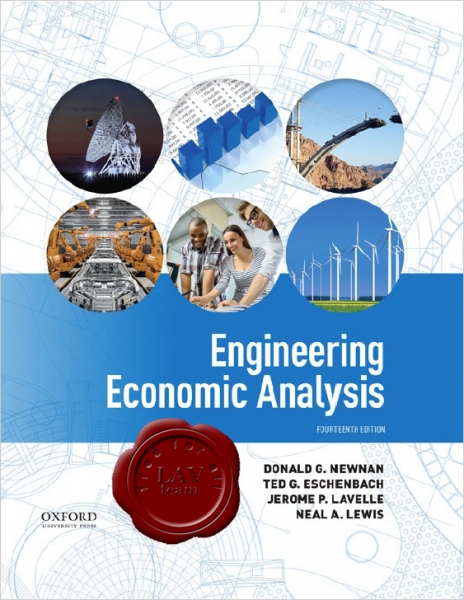
Engineering Economic Analysis offers comprehensive coverage of financial and economic decision making for engineers, with an emphasis on problem solving, life-cycle costs, and the time value of money. The authors' clear, accessible writing, emphasis on practical applications, and relevant contemporary examples have made this text a perennial bestseller. With its logical organization and extensive ancillary package, Engineering Economic Analysis is widely regarded as a highly effective tool for teaching and learning. This 14th edition includes crucial updates to cover new US tax laws and software that will algorithmically generate and automatically grade homework problems. |
| |
 Читать статью дальше (комментариев - 10)
Читать статью дальше (комментариев - 10)
| |
|
 |
 Автор: Williams Автор: Williams
 Дата: 24 сентября 2020 Дата: 24 сентября 2020
 Просмотров: 1 703 Просмотров: 1 703 |
| |
Авакян В.В. - Прикладная геодезия: технологии инженерно-геодезических работ
3-е издание, исправленное и дополненное
Инфра-Инженерия, 2019
pdf, 617 pages, russian
ISBN: 978-5-9729-0309-2
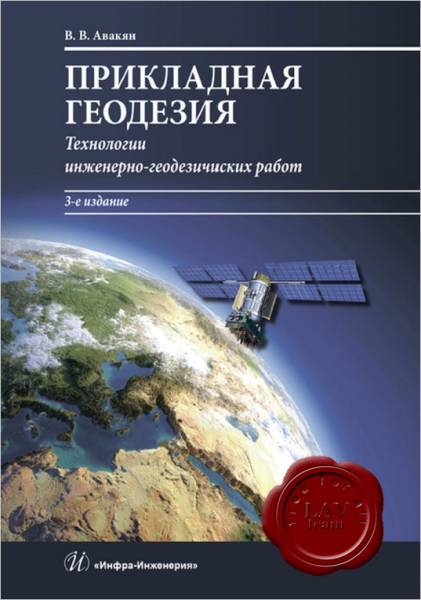
В учебном пособии изложены методы, техника и технология производства инженерно-геодезических работ при изысканиях и строительстве инженерных сооружений, гражданских зданий, гидротехнических, подземных и других объектов строительства. Отражены перемены, связанные с внедрением новых средств измерений, спутниковых геодезических приёмников, электронных тахеометров, цифровых нивелиров, а также программных средств вычислений и обработки результатов измерений. Приведенные технологии соответствуют актуализированным редакциям действующих нормативных актов. |
| |
 Читать статью дальше (комментариев - 14)
Читать статью дальше (комментариев - 14)
| |
|
 |
 Автор: Williams Автор: Williams
 Дата: 22 сентября 2020 Дата: 22 сентября 2020
 Просмотров: 1 770 Просмотров: 1 770 |
| |
W. Larsen Angel - HVAC Design Sourcebook
McGraw Hill, 2020
pdf, 480 pages, english
ISBN: 978-1-26-045725-4
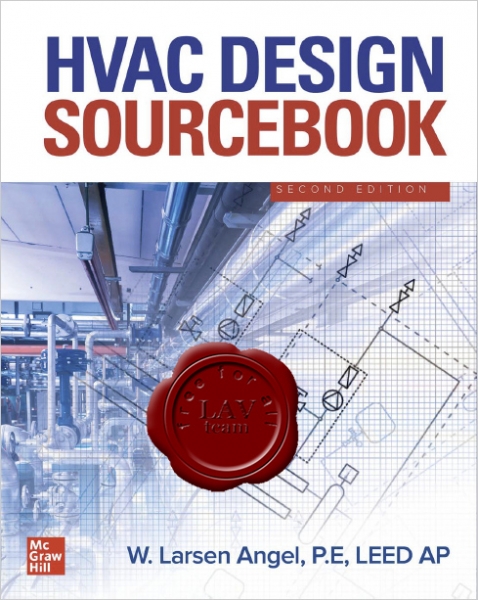
The definitive guide to HVAC design - thoroughly revised for the latest technologies. This fully updated guide covers the entire HVAC system design process from concept to commissioned systems. Written by a recognized HVAC expert, the book illustrates each step through photographs, drawings, and comprehensive discussions. This new edition has been completely refreshed to align with current industry standards and includes several brand-new chapters. HVAC Design Sourcebook, Second Edition contains a chapter-long case study that provides a step-by-step look at the design of a real-world HVAC project.
Coverage includes:
- The design process.
- Piping, valves, and specialties.
- Central plant and air systems.
- Piping and ductwork distribution systems.
- Terminal equipment.
- Variable refrigerant flow systems.
|
| |
 Читать статью дальше (комментариев - 10)
Читать статью дальше (комментариев - 10)
| |
|
 |
 Автор: Williams Автор: Williams
 Дата: 17 сентября 2020 Дата: 17 сентября 2020
 Просмотров: 471 Просмотров: 471 |
| |
Catherine Bertrand, Sophie Denimal, Marc Steinmann, Philippe Renard - Eurokarst 2018, Besançon
Advances in the Hydrogeology of Karst and Carbonate Reservoirs
Springer, 2020
pdf, 243 pages, english
ISBN: 978-3-030-14014-4
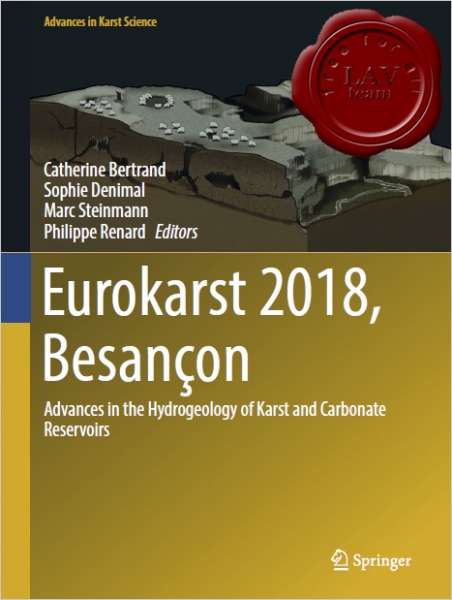
This book presents selected papers from the EuroKarst 2018 conference, which highlighted the latest advances in the field of Karst Hydrogeology and Carbonate Reservoirs. The event attracted more than 180 participants. From among their contributions, the papers were selected and subsequently reviewed by the scientific committee to ensure the highest possible quality. |
| |
 Читать статью дальше (комментариев - 1)
Читать статью дальше (комментариев - 1)
| |
|
 |
 Автор: Williams Автор: Williams
 Дата: 15 сентября 2020 Дата: 15 сентября 2020
 Просмотров: 2 353 Просмотров: 2 353 |
| |
Alain Dassargues - Hydrogeology: Groundwater Science and Engineering
CRC, 2019
pdf, 493 pages, english
ISBN-13: 978-1-4987-4400-3

One might wonder whether we need yet another hydrogeology textbook. Before we express our opinion on this, let us evaluate what this new book has to offer. Written for an undergraduate and graduate audience, it brings together both the science and the engineering of hydrogeology. The author draws on his more than 30 years of experience as a scientist and engineer, but especially as a lecturer in courses on hydrogeology and groundwater modeling. As a professor in hydrogeology and environmental geology at the University of Liège in Belgium and part-time professor at KU Leuven (1995–2012), his extensive teaching experience has clearly shaped this highly accessible text. The book covers a wide range of topics, from the basics of groundwater occurrence and flow (Chapters 1–4 and 9) to conductivity measurements (Chapter 5), land subsidence (Chapter 6), chemistry and contaminant transport (Chapters 7–10), heat transfer (Chapter 11), and modeling (Chapters 12 and 13).
The preamble to Chapter 1 sets out the philosophy of the author for the science and engineering of groundwater, which has to serve modern approaches such as, for example, the water-energy-food nexus for managing our water resources. Definitions are provided for hydrogeology and groundwater. For the latter, a contemporary definition of "water underground in pore spaces and fractures” is used. This deviates from the classical definition of "subsurface water beneath the water table,” which was already recognized as a limitation by Freeze and Cherry (1979), since the "study of groundwater must rest on an understanding of the subsurface water regime in a broader sense.” Chapter 2 presents a comprehensive overview of the hydrological cycle, including sections on evapotranspiration, recharge, and baseflow estimation methods. Chapter 3 elaborates the basic terminology of the science of groundwater and its occurrence in different geological environments. Next, Chapter 4 details the main laws and concepts of saturated groundwater flow. The book follows a mathematical and quantitative presentation approach, which is evident in this chapter from the very clear step-by-step derivation of the groundwater flow equations for steady and transient state in two and three dimensions for confined and unconfined conditions. Remarkable is the absence of the typical discussion in hydrogeology textbooks of Tothian groundwater flow systems. Instead, a strong warning is issued that the analytical approaches to calculate flownets "are of limited interest and can even be misleading” because the water table is often prescribed and isotropic-homogeneous conditions are assumed (see also Bresciani et al. 2016). Chapter 5, "Hydraulic Conductivity Measurements,” is one of the chapters that stands out in this textbook. With 47 pages, this chapter provides an excellent overview of the typical laboratory, slug, and pumping tests. However, it also contains a section on less well-known methods, including the use of air permeameter measurements on outcrops or coring material. Chapter 6 is a succinct and interesting summary of the coupling of geomechanics and groundwater flow, describing the physical relationships between land subsidence and pumping. It also illustrates this appropriately through five case studies of sinking cities. Chapter 7 is a solid "Introduction to Groundwater Quality and Hydrochemistry,” as its title suggests. In addition, it also discusses groundwater quality standards and sampling and monitoring strategies. Chapter 8 is the second highlight of this book. With 88 pages and 228 references, it is an outstanding primer on contaminant transport. It presents and discusses the physical and chemical processes affecting solutes in groundwater, while solute transport equations are rigorously developed. Other sections expand on non-aqueous phase liquid (NAPL) transport, remediation, tracer tests, transport and residence times, the use of isotopes and environmental tracers, and, finally, vulnerability and protection of groundwater. Chapter 9 concisely discusses flow and transport processes in partially saturated media. The corresponding equations are explained in detail. Similarly, Chapter 10 on "Salinization and Density Dependent Groundwater Flow and Transport” also includes the formulation of the respective equations. Chapter 11 on "Heat Transfer in Aquifers and Shallow Geothermy” is a welcome extension of the standard hydrogeological topics generally presented in groundwater textbooks. The use of heat data, as available from new sensors, is strongly increasing in hydrogeology, such as in groundwater–surface water interaction studies and tracer tests. Heat-based methods should be a standard topic in current hydrogeology teaching and therefore in any hydrogeology textbook. Interestingly, the discussion on the use of heat for flux estimation is extended with a description of the characteristics of different shallow thermal energy storage systems. The importance is stressed by the author in stating: "More generally, the transition toward renewable energy and power supplies necessitates increasingly more projects involving the underground storage of gas (methane, hydrogen, compressed air, and CO2), water and heat. Hydrogeologists are key actors in these projects.” With its total of 114 pages and almost 300 references, the last two chapters (12 and 13) are the final highlight of this book. Those chapters clearly elevate this textbook. On the one side, they are beneficial for an introductory hydrogeology course, and on the other side they are also highly relevant for an advanced groundwater modeling course. Likewise, they will serve the professional with a reference guide on the different methods for groundwater flow and transport modeling. Chapter 12 discusses the purpose of modeling, conceptual model building, initial and boundary conditions, model design and data, calibration, validation, sensitivity analysis, and inverse modeling. Moreover, advanced topics of geostatistical modeling and probability, including multiple-point geostatistics and Bayesian learning, are outlined. In the last chapter, the author discusses the mathematical basis of different numerical techniques for modeling groundwater flow and transport. In addition to the standard finite-difference (MODFLOW) technique, he also explains the finite-element and finite-volume methods and the whole gamut of numerical methods for solute transport.
In a field in which researchers are becoming increasingly specialized, it is a rare feat to have a single-author text covering such a wide range of topics. The style of writing is therefore consistent throughout the book, which is especially apparent in the focus on quantification and the mathematical rigor. This makes the book relevant, not only to its intended audience of undergraduate and graduate students, but also to postgraduates and researchers from other disciplines as a broad introduction to the field of hydrogeology. Finally, its highly up-to-date literature provides us with a reference for years to come.
While the book is comprehensive, it is not complete. The author has made clear choices: groundwater biology, groundwater-dependent ecosystems, groundwater–surface water interaction, hydrogeophysics, and management hardly feature in this book. As an educational tool, its structured style and clear black-and-white figures make it very attractive. On the other hand, it lacks review questions and calculation examples. The book is available in hardback and e-book, and a version in French will be published soon.
To conclude, we return to the initial question: every new textbook on hydrogeology is a further marker of the development of the science and practice of hydrogeology. Although no single textbook can ever be complete, the diversity of texts makes the field of hydrogeology rich. These textbooks capture the expertise of decades of research and teaching. Therefore, they not only become a giant’s shoulder to stand on for a new generation of hydrogeologists, but above all they are a celebration of the steady progress in hydrogeological science. |
| |
 Читать статью дальше (комментариев - 11)
Читать статью дальше (комментариев - 11)
| |
|
 |
| ПОИСК ПО САЙТУ |
 |
|
 |
| КАЛЕНДАРЬ | | |
 |
| « Июль 2025 » |
|---|
| Пн | Вт | Ср | Чт | Пт | Сб | Вс |
|---|
| | 1 | 2 | 3 | 4 | 5 | 6 | | 7 | 8 | 9 | 10 | 11 | 12 | 13 | | 14 | 15 | 16 | 17 | 18 | 19 | 20 | | 21 | 22 | 23 | 24 | 25 | 26 | 27 | | 28 | 29 | 30 | 31 | |
|
 | |
| |
|